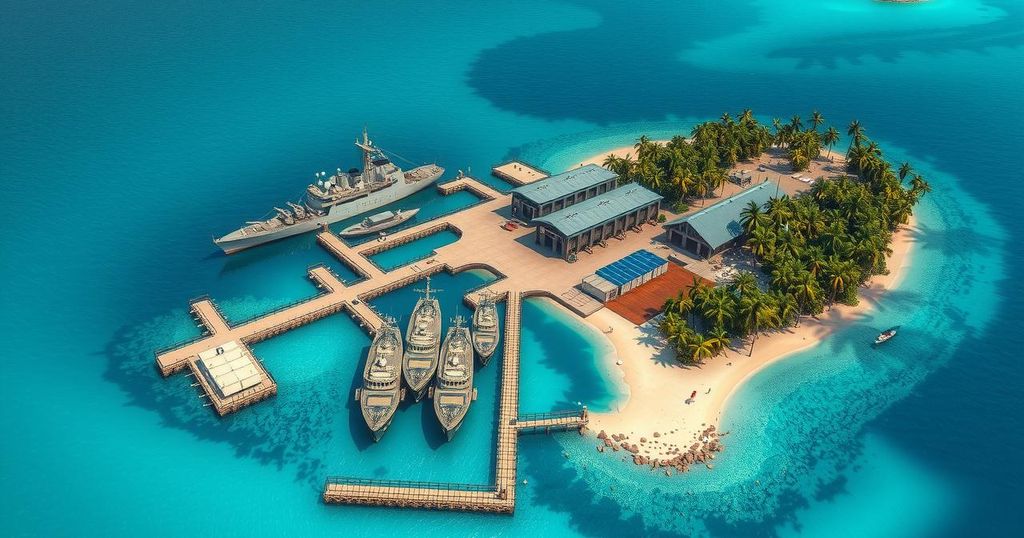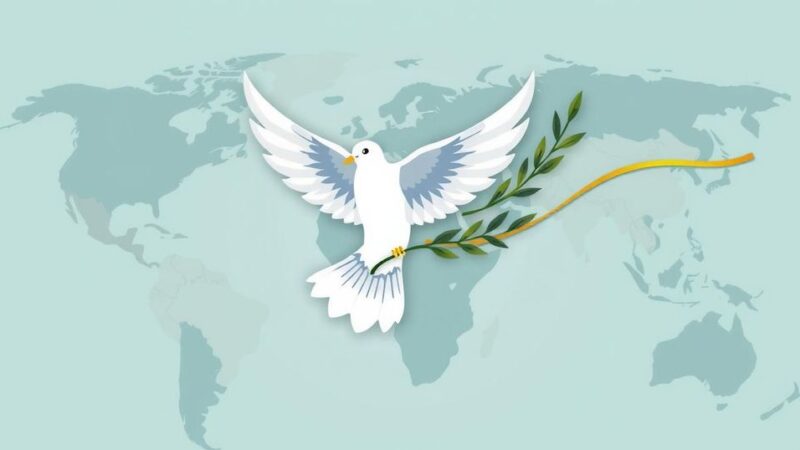Iran threatens to attack British forces if the U.S. targets the country militarily, asserting that all forces will be treated similarly in such scenarios. Iranian capabilities include ballistic missiles and drones against U.S. bases, particularly Diego Garcia, which is strategically important for military operations against Iran. The political backdrop includes Trump’s pressure on Iran over its nuclear program and Iran’s mixed signals regarding negotiations.
Iran has issued a warning that it plans to target British forces located at the Chagos Islands should President Trump launch military action against the country. Following Trump’s threats of military intervention regarding Iran’s nuclear program, an Iranian military official stated that both British and American forces would be targeted if attacked. “There will be no distinction in targeting British or American forces if Iran is attacked from any base in the region or within the range of Iranian missiles,” he asserted.
Iranian media reported that missiles and drones would be deployed against the Diego Garcia base, which houses vital U.S. military resources. The Islamic Republic claims it has the capability to launch these strikes with weapons such as the Khorramshahr missile and the Shahed-136B drone. The Diego Garcia facility is highlighted due to its connection to U.S. bombers that can reach Iranian targets, particularly its underground facilities. Satellite imagery corroborated that B-2 Spirit bombers are stationed there.
In reaction to these threats, a British government spokesperson condemned the statements and reaffirmed its commitment to regional stability, emphasizing the strategic importance of Diego Garcia for UK and U.S. security. The base was mentioned among other military sites in Asia and the Middle East as potential targets for Iran if it feels threatened.
The geopolitical context includes ongoing discussions regarding the Chagos Archipelago, where Diego Garcia is located. This debate revolves around the territory’s sovereignty, with Mauritius seeking to reclaim control of the islands while the U.S. and UK maintain their military presence there.
Trump’s renewed focus on Iran involves a dual strategy of imposing sanctions and seeking a diplomatic resolution regarding its nuclear capabilities. He indicated a preference for a diplomatic approach, stating, “I don’t want that to happen. My big preference… is we work it out with Iran. But if we don’t work it out, bad, bad things are going to happen to Iran.”
At the same time, Iran’s leadership has been cautious about negotiations, with Ayatollah Ali Khamenei explicitly stating that direct dialogue with the U.S. is not an option. Amidst these tensions, several Iranian officials have hinted at the possibility of indirect talks without caving into U.S. pressure.
Iran has signaled its position via correspondence with the Trump administration, indicating a willingness to discuss matters indirectly. Tehran is reportedly preparing a strategic response to Trump’s proposals, yet direct negotiations remain off the table under current circumstances.
In summary, the situation remains precarious as both sides navigate the complexities of military threats, diplomatic overtures, and strategic defense policies, which could significantly influence regional stability.
The article outlines Iran’s threats against British forces in the Chagos Islands, emphasizing a clear stance on retaliation against any U.S. military action. Iranian officials assert that they will not differentiate between targeting American and British forces. Meanwhile, the geopolitical dynamics involve ongoing negotiations and military preparedness, with Trump expressing a desire for a diplomatic solution while imposing sanctions. The complexities surrounding the Chagos base and Iran’s defensive posture reflect intricate international relations that could escalate tensions further.
Original Source: www.telegraph.co.uk






